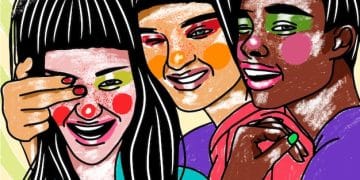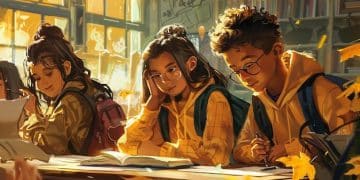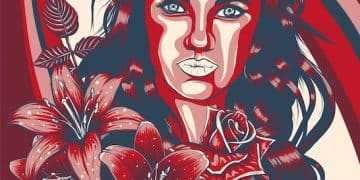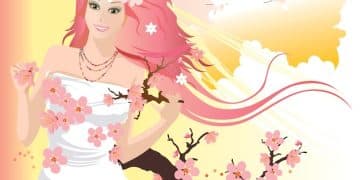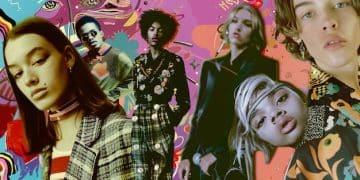Shonen Manga’s Female Representation: Progress in 2025?
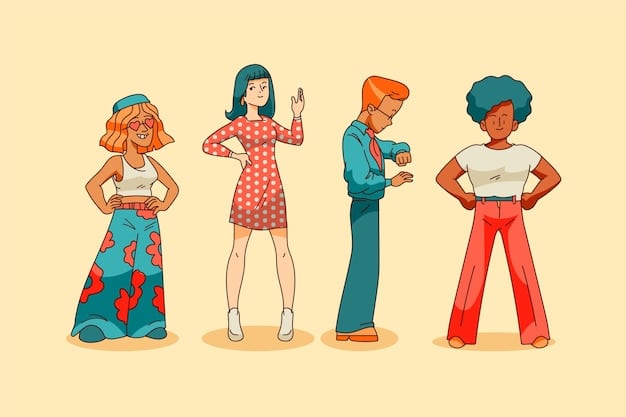
Shonen Manga’s Female Representation in 2025: This article explores the evolving roles of female characters in shonen manga, examining whether recent trends indicate meaningful progress or persistent stereotypes.
Are we finally seeing meaningful progress in how female characters are portrayed in Shonen Manga’s Female Representation: Are We Seeing Progress in 2025? Shonen manga, traditionally aimed at a young male audience, has often been criticized for stereotypical depictions of women. But is this changing?
The History of Female Representation in Shonen Manga
The representation of female characters in shonen manga has been a complex journey, evolving alongside societal attitudes and changing audience expectations. Initially, female characters often served as supporting roles, primarily defined by their relationships to male protagonists.
Let’s take a closer look at the historical trends that have shaped the current landscape.
Early Archetypes and Stereotypes
In the early days of shonen manga, female characters were often relegated to stereotypical roles such as the damsel in distress, the love interest, or the supportive mother figure. These archetypes, while sometimes endearing, lacked depth and agency.
They rarely had their own goals or storylines independent of the male characters, reinforcing traditional gender roles.
The Rise of Stronger Female Leads
As the industry matured, so did the portrayal of women. Series like “Rose of Versailles” and “Revolutionary Girl Utena” offered complex, powerful female leads who challenged conventional norms. These characters were not just strong physically, but also emotionally and intellectually. They led their own narratives, driving the plot forward with their decisions and actions.
This shift marked a significant departure from the earlier, more limited representations.
- Physical Strength: Female characters began to exhibit impressive fighting abilities, often rivaling or surpassing their male counterparts.
- Emotional Depth: Emotional depth was added, allowing for greater relatability and complexity, moving beyond surface-level traits.
- Independent Goals: Female characters developed their own motivations and aspirations.
- Challenging Norms: Several manga started questioning and subverting traditional gender roles.
The historical evolution of female representation in shonen manga showcases a gradual but significant shift from stereotypical roles to more complex and empowered characters. This evolution reflects broader societal changes and an increasing demand for diverse and relatable narratives.
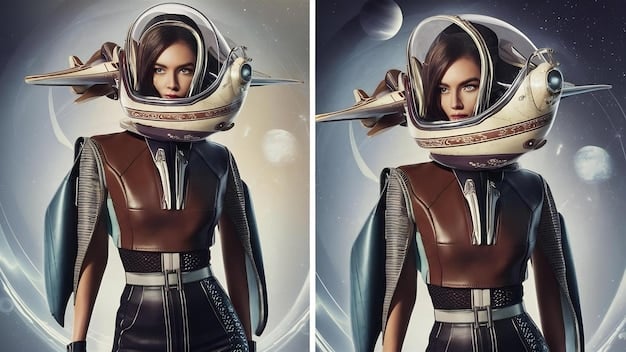
Modern Trends: What’s Changed?
In recent years, there’s been a noticeable shift in the way female characters are written and drawn in shonen manga. This change is influenced by several factors, including an increasingly diverse readership and a greater awareness of gender representation in media.
But how far have we come from the stereotypes of the past?
Increased Diversity in Character Design
One of the most significant changes is the increased diversity in character design. Female characters are no longer confined to a single mold. They come in all shapes, sizes, and personalities. From the muscular and imposing to the petite and cunning, modern shonen manga offers a wide range of female physiques.
This variety allows readers to connect with characters on a more personal level.
More Active Roles in the Plot
Modern female characters are no longer just sidekicks; they’re active participants in the main storyline. Often, they play crucial roles in solving problems, defeating enemies, or driving the narrative forward. Their actions have real consequences, and their decisions matter.
This active participation gives them agency and makes them feel more like fully realized characters.
- Strategic Thinkers: Female characters often take on roles as tacticians and strategists, using their intellect to outmaneuver opponents.
- Moral Compass: A moral compass provided by female characters, offering guidance and ethical considerations to the story.
- Key Motivators: Female characters played inspirational and motivational roles, pushing the male characters to reach their full potential.
- Problem Solvers: Creative approaches to problems provided by female characters, offering alternative viewpoints and solutions.
The modern trends in female representation in shonen manga indicate a move towards more diverse, active, and complex characters. This shift reflects a growing awareness of the importance of gender representation and a desire to create more inclusive and engaging narratives.
Examples of Progressive Female Characters
To illustrate the progress being made, let’s examine some specific examples of female characters who represent a shift away from traditional stereotypes. These characters demonstrate agency, complexity, and a significant impact on their respective stories.
These examples highlight notable progress and inspiring characters.
Nezuko Kamado (Demon Slayer)
Nezuko from “Demon Slayer” is a prime example of a character who transcends traditional portrayals. While cursed to be a demon, her unwavering loyalty to her brother and her unique abilities make her a powerful and integral part of the Demon Slayer Corps.
Her struggles and evolution challenge the typical damsel-in-distress trope.
Momo Yaoyorozu (My Hero Academia)
Momo from “My Hero Academia” is an intelligent and resourceful hero with the power to create any non-living material from her own body. Her strategic thinking and leadership skills make her an essential member of Class 1-A.
She’s not just a powerful fighter but also a brilliant tactician.
- Erza Scarlet (Fairy Tail): A strong, independent mage who is respected for her strength and leadership.
- Mikasa Ackerman (Attack on Titan): A skilled soldier fiercely protective of Eren, displaying unwavering determination.
- Nobara Kugisaki (Jujutsu Kaisen): A confident and powerful sorcerer who believes in her own strength and fights on her own terms.
- Rukia Kuchiki (Bleach): A Soul Reaper who plays a pivotal role in the story, demonstrating both strength and vulnerability.
These examples showcase a range of female characters who are not just defined by their relationships to male characters but also by their own strengths, goals, and complexities. They represent a step forward in the ongoing evolution of female representation in shonen manga.
Areas Where Improvement Is Still Needed
While progress has been made, it’s important to acknowledge that there are still areas where female representation in shonen manga could be improved. Some lingering stereotypes and tropes continue to surface, hindering the development of truly diverse and empowered female characters.
Lets explore some persistent issues that need continued attention.
The Over-Sexualization of Female Characters
One of the most common criticisms of shonen manga is the over-sexualization of female characters. Gratuitous fan service, unrealistic body proportions, and skimpy outfits are often used to appeal to a male audience, reducing female characters to mere objects of desire.
This can undermine their credibility and diminish their roles in the story.
The “Token Female” Syndrome
Another issue is the presence of “token” female characters who are included primarily to fulfill a diversity quota. These characters often lack depth and are not given the same level of development as their male counterparts. Their storylines are often underdeveloped, and they serve little purpose beyond providing a female presence in the cast.
This can feel superficial and insincere.
- Lack of Agency: Female characters still sometimes lack control over their own destinies, with their actions dictated by male characters or plot devices.
- Limited Backstories: Limited backstories provided to female characters preventing them to reach their full potential.
- Stereotypical Personality Traits: Recurring use of stereotypical personality traits among female characters, limiting their individuality.
- Underrepresentation in Leadership Roles: Rare appearance of female characters in positions of authority, denying them appropriate recognition.
Addressing these issues is crucial for creating a truly inclusive and representative landscape in shonen manga. By moving beyond stereotypes, reducing over-sexualization, and giving female characters more agency and depth, creators can elevate the quality and impact of their stories.
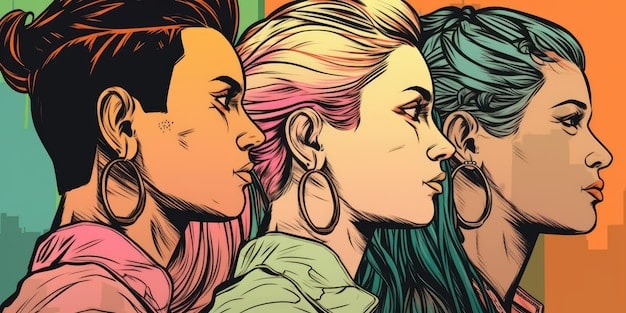
The Impact of Western Influence on Shonen Manga
The growing popularity of Western media has had a notable impact on the shonen manga industry. As Western comics, animated shows, and video games gain traction in Japan, they introduce new perspectives on gender roles and character development.
Let’s analyze how this cultural exchange is shaping manga’s narrative.
Adopting More Diverse Narrative Structures
Western media often embraces more diverse narrative structures that challenge traditional storytelling conventions. These include exploring multiple perspectives, subverting expectations, and delving into complex themes.
Shonen manga creators are increasingly experimenting with these techniques, resulting in richer and more nuanced stories.
Greater Emphasis on Character Complexity
Western writers often prioritize character complexity, giving their creations multifaceted personalities, flaws, and motivations. This approach is gradually influencing shonen manga, leading to more relatable and engaging characters.
Female characters, in particular, are benefiting from this trend, as creators explore their inner lives and motivations in greater depth.
- Increased Representation: Western influence has encouraged greater representation of diverse characters, including women of color, LGBTQ+ individuals, and people with disabilities.
- Challenging Gender Norms: Western media often challenges traditional gender norms, portraying women in leadership roles and men expressing vulnerability.
- Promoting Inclusivity: Western media has been instrumental in promoting inclusivity and advocating for equal representation across all platforms.
- Inspiring Creativity: Western media has contributed to shaping new narratives and concepts in shonen manga, impacting character storylines.
The influence of Western media on shonen manga is contributing to a more diverse, complex, and inclusive landscape. As creators continue to learn from and collaborate with Western artists and writers, we can expect to see even greater progress in the representation of female characters.
Looking Ahead: What Does the Future Hold?
As we look ahead to 2025 and beyond, the future of female representation in shonen manga appears promising. With increasing awareness of gender issues and a growing demand for diverse and empowered characters, the industry is poised to continue evolving.
What key changes can we expect to see in the next few years?
More Female Creators in the Industry
One of the most significant changes we can expect is an increase in the number of female creators working in the industry. More female writers, artists, and editors will bring fresh perspectives and insights, leading to more authentic and nuanced portrayals of female characters.
This shift could be transformative.
Greater Focus on Character Development
We can also anticipate a greater focus on character development, with female characters being given more agency, depth, and complexity. Creators will prioritize exploring their inner lives, motivations, and personal journeys.
Characters will also be given more meaningful roles in the plot and impact on the world around them.
- Diverse Storylines: Development of storylines addressing multifaceted experiences and challenges of female characters.
- Challenging Stereotypes: Deliberate attempts to subvert traditional stereotypes and create more authentic portrayals.
- Positive Role Models: Promoting positive role models for young readers, emphasizing strength, intelligence, and independence.
- Global Perspectives: Incorporating global perspectives and cultural context to enhance diversity and relevance.
The future of female representation in shonen manga looks bright. With more female creators, greater focus on character development, and a continued push for inclusivity, we can expect to see even more diverse, complex, and empowered characters in the years to come. This evolution will not only enrich the stories being told but also contribute to a more equitable and representative media landscape.
| Key Point | Brief Description |
|---|---|
| 💪 Strong Leads | Modern manga features powerful, independent female protagonists. |
| 🎨 Diversity | Character designs are more varied, breaking old stereotypes. |
| 🎭 Complex Roles | Female characters have significant impact on narratives. |
| 🌐 Western Influence | Western media inspires inclusivity in manga plots and characters. |
FAQ
Accurate female representation in shonen manga shapes young readers’ perceptions and expectations, promoting gender equity and inclusive narratives for all viewers. It also encourages diversity.
Common stereotypes include damsels in distress, love interests with no independent goals, and overly sexualized characters lacking meaningful depth or agency in the larger story.
Western media encourages diverse storytelling, complexity, and inclusivity, which prompts shonen manga creators to present new characters transcending gender stereotypes. They also enhance media’s creativity.
Further improvements require minimizing over-sexualized characters, avoiding token female depictions, and creating more complex main roles to amplify the impact that individual women demonstrate in the story.
In future storylines, expect women to play key roles as creators and storytellers who challenge traditional tropes and enhance female roles. This will make characters more empowered as diversity increases.
Conclusion
In conclusion, the evolution of female representation in shonen manga reflects a broader cultural shift towards inclusivity and empowerment. While progress has been made, ongoing efforts are needed to address remaining stereotypes and create truly diverse and complex female characters. The future holds promise for more meaningful and equitable portrayals, enriching the stories and inspiring audiences worldwide.
